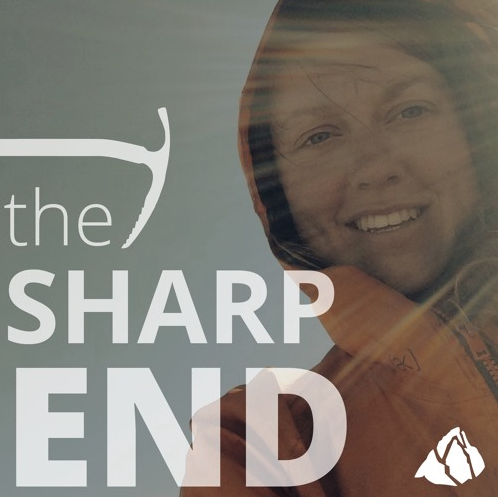Crevasse Fall – Climbing Unroped
Alaska, Hayes Range, Trident Glacier
|
|
|
Sarah Hart walks across the Trident Glacier shortly before
the author's crevasse fall. Base camp is visible on the right. |
Sarah Hart, 35, and I, 32, intended to climb the east ridge of 13,832-foot Mt. Hayes, the tallest peak in the eastern Alaska Range, from the Trident Glacier. The Trident was flat and windswept, and the snow surface was so hard that we didn’t even leave footprints in the crust. We decided it would be fine to cross the glacier to the base of the ridge unroped.
I walked in front, wearing a harness, while Sarah walked behind me with the rope. It was Sarah's idea that whoever carried the rope should go second, in the unlikely event of a crevasse fall. I only made it a few hundred meters across the flat glacier from the tent before breaking through a hidden snow bridge and falling into a crevasse. The distance that I fell was never measured, but I think it was as much as 60 feet.
I was not wearing a helmet (as I was not expecting to fall in a crevasse) and I was knocked out in the fall. When I regained consciousness, Sarah was lowering me a rope. We were able to communicate, and she told me that she had a good anchor for me. Using a Petzl Tibloc and a prusik, I was able to climb out on my own. We walked back to the tent and used a satellite phone to call our pilot for a pickup. We were safely back to the highway in few hours.
ANALYSIS
If you fall in a crevasse unroped, you fucked up. There are a lot of dangers that are inherent to climbing, but this isn't one of them. My accident boiled down to complacency—I certainly had the glacier experience to know better. I just thought that it would be fine. It wasn't, and my fall easily could have been fatal or resulted in a life-changing injury. I got lucky.
Though I could see evidence in the distance of crevasses running perpendicular to our path, I was certain they were either closed or well-bridged along our path. There was no indication of the crevasse on the snow surface in the area where I fell in. I believe that the high winds that blow through the dry, cold Hayes Range created an ideal environment for thin, weak bridges that sag very little. Colin Haley had a similar accident in 2013, and I have little to add to his assessment of the factors that created a dangerous snowpack. In the future, particularly in dry climates, I will be far more careful.
Had Sarah not been behind me, carrying the rope, things might have turned out differently. In the fall my shoulder popped out of socket but immediately went back in (an old injury, but very painful when it happens), and attempting to ice climb out, without assistance, would have been an ordeal, to say the least. That was one simple decision—a good one, in a sea of bad ones—that may have saved my life.
Sarah was able to assist me in passing the lip by lowering an end of the rope and hauling, using a Petzl Micro Traxion. She was very pleased with the Micro Traxion for use as an autoblocking pulley. Given that I found my prusik to be time-consuming and inconvenient for climbing out of the crevasse, and the possibility of using a Micro Traxion as an ascender, I believe that I'll be adding that or a similar device to my harness for future use in rescue scenarios. I will then have a Tibloc and a Micro Traxion as my ascending kit, with the possibility of improvising a prusik as a backup.
A note on partner rescue: I weigh nearly 100 pounds more than Sarah does. Though we didn't do any hauling to test this, I believe there is no way she would have been able to haul me out on her own using a 3:1 mechanical advantage system. I believe the common practice of carrying two pulleys needs to be reassessed, since in many situations more mechanical advantage will be required.
Going forward, I will be far more cautious in my approach to glacier travel. When arriving at a new area, I'll spend more time probing to learn about the snowpack and the bridges. Though roping up for glacier travel is tedious, I will certainly be much more dedicated about doing it, including giving substantial consideration to the possibility of dragging a roped partner in with me.
Though our decision to travel unroped on the glacier was contrary to well-accepted safe practices, I believe many people likely would have made the same decision—with the rationale that it would be “fine." I urge everyone to consider the risk/reward of that decision, and not to be complacent with respect to such high-consequence decisions. (Source: Seth Adams.)
Fine another account of these events and more photos at Seth Adams' blog. This incident also was featured in the Sharp End podcast.





